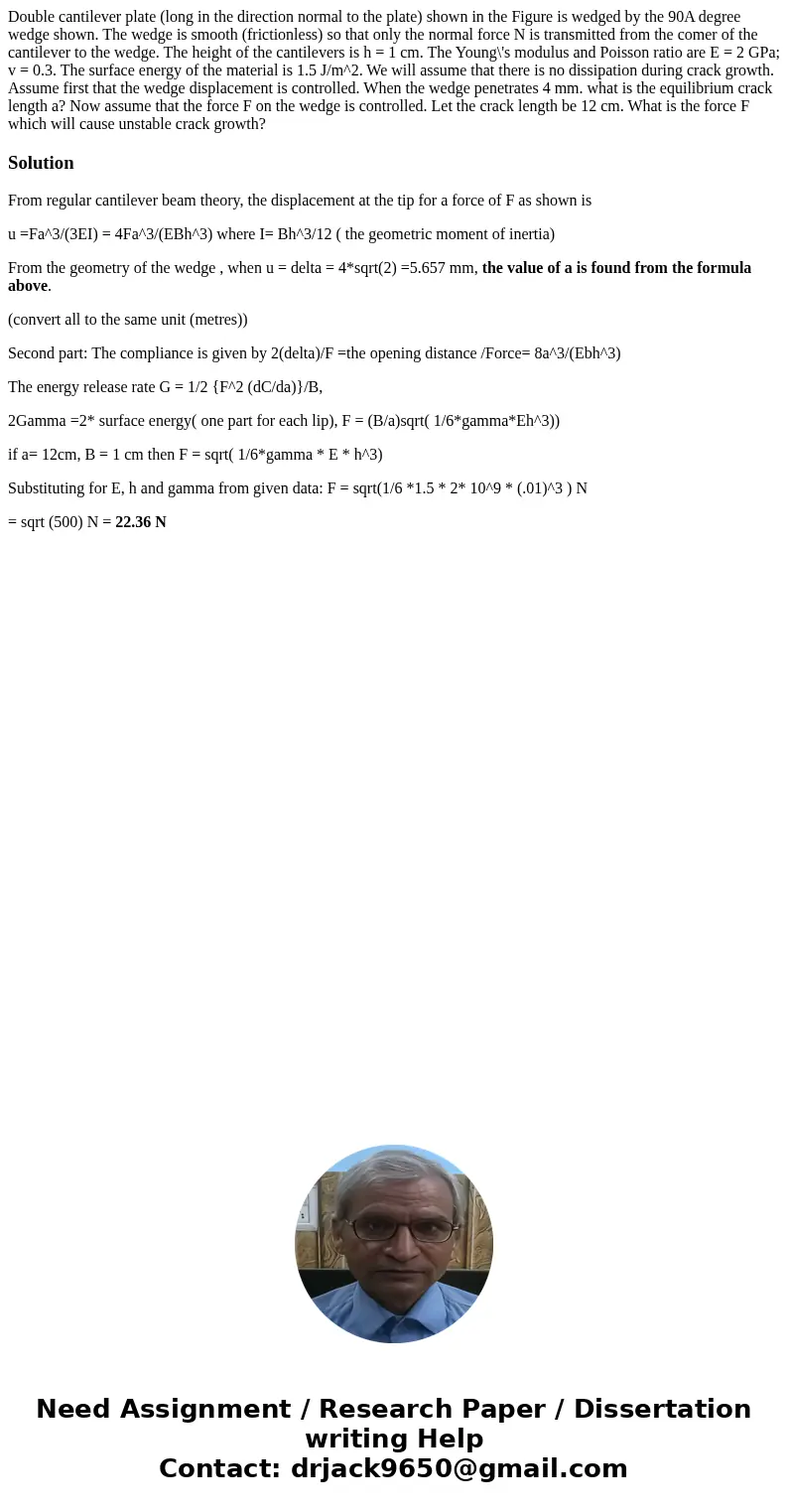Double cantilever plate long in the direction normal to the
Double cantilever plate (long in the direction normal to the plate) shown in the Figure is wedged by the 90A degree wedge shown. The wedge is smooth (frictionless) so that only the normal force N is transmitted from the comer of the cantilever to the wedge. The height of the cantilevers is h = 1 cm. The Young\'s modulus and Poisson ratio are E = 2 GPa; v = 0.3. The surface energy of the material is 1.5 J/m^2. We will assume that there is no dissipation during crack growth. Assume first that the wedge displacement is controlled. When the wedge penetrates 4 mm. what is the equilibrium crack length a? Now assume that the force F on the wedge is controlled. Let the crack length be 12 cm. What is the force F which will cause unstable crack growth?
Solution
From regular cantilever beam theory, the displacement at the tip for a force of F as shown is
u =Fa^3/(3EI) = 4Fa^3/(EBh^3) where I= Bh^3/12 ( the geometric moment of inertia)
From the geometry of the wedge , when u = delta = 4*sqrt(2) =5.657 mm, the value of a is found from the formula above.
(convert all to the same unit (metres))
Second part: The compliance is given by 2(delta)/F =the opening distance /Force= 8a^3/(Ebh^3)
The energy release rate G = 1/2 {F^2 (dC/da)}/B,
2Gamma =2* surface energy( one part for each lip), F = (B/a)sqrt( 1/6*gamma*Eh^3))
if a= 12cm, B = 1 cm then F = sqrt( 1/6*gamma * E * h^3)
Substituting for E, h and gamma from given data: F = sqrt(1/6 *1.5 * 2* 10^9 * (.01)^3 ) N
= sqrt (500) N = 22.36 N

 Homework Sourse
Homework Sourse